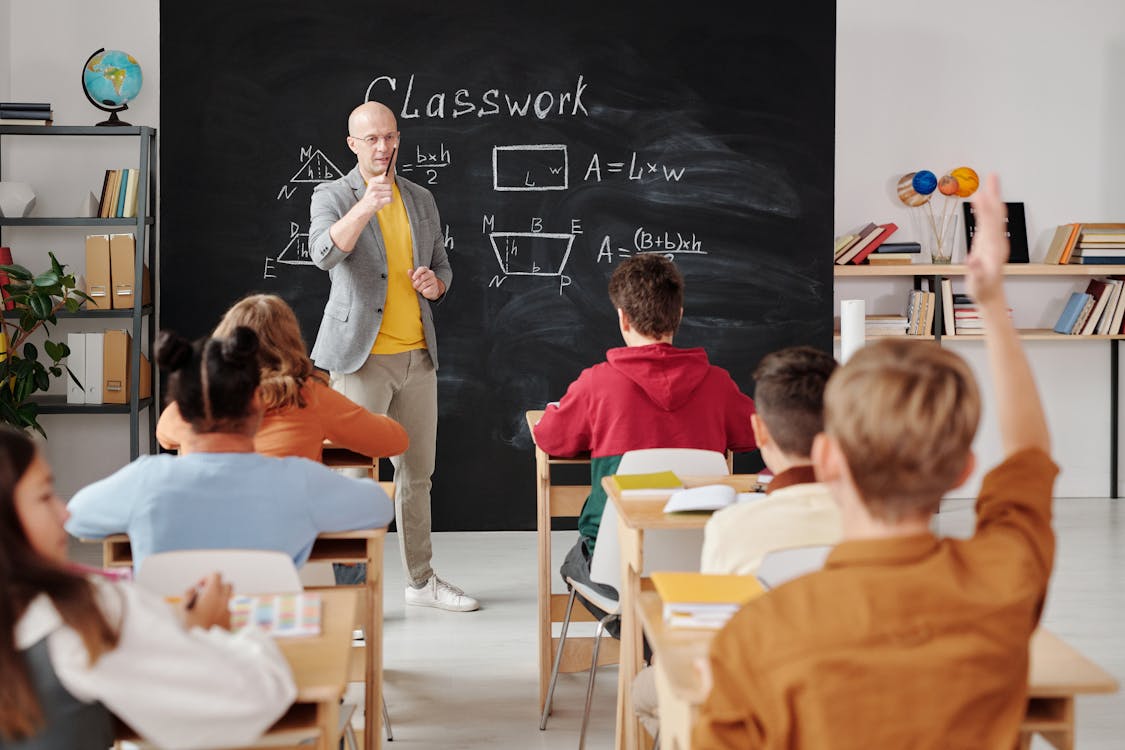One of the hardest parts about running a classroom is keeping your students engaged. While every teacher’s goal is a lively, interactive classroom, sometimes it’s easier said than done! When teaching students with ADHD, classroom engagement may present additional challenges. The heart of student engagement is to ensure that your students are motivated to learn. Here are six key strategies to help your students be more involved in your lessons.
What Is Student Engagement?
According to Edglossary.org, student engagement is “the degree of attention, curiosity, interest, optimism, and passion that students show when they are learning or being taught.” It’s about more than just “paying attention” in class– its about being involved! Engagement means that your students are participating in the lesson and are actively working on learning the material instead of simply being taught. There are plenty of reasons to encourage classroom engagement, including:
- Increased academic performance
- Better social skills
- Higher standardized test scores
- Increased academic satisfaction
Common Challenges for Students with ADHD
Students with ADHD often face additional struggles in the classroom. Impulsivity and inability to focus are hallmarks of this disorder. These traits can make it difficult to contribute effectively to educational environments. Some of these challenges are:
- Physical restlessness (like fidgeting) which may distract other students
- Poor fine motor control that can make taking notes difficult
- Forgetfulness when remembering test dates and homework assignments
- Feeling alienated from other students because of their differences

1. Encourage Choral Response
Bonus tip: Use music or sounds to let them know it’s their time to respond!
A quiet classroom is likely a distracted one. The easiest way to encourage student engagement is simply to get them talking! Choral response is when students respond verbally to an instructor’s cues. This method works best with short, simple answers like “yes” and “no” or other one word answers; you’ll have less success if you ask students to repeat back entire phrases. Choral response is one of several methods designed to encourage student learning called OTR, or Opportunities to Respond. These methods are perfect for the end of the lesson when you’re reviewing material your class has just learned, or at the beginning of a lesson
According to the IRIS Center, a national center dedicated to improving education outcomes for all children, there are two great benefits to including choral response and other opportunities to respond into your classroom. Not only will your students be more engaged and more likely to retain material, but they will have less opportunities to become off-task.
Don’t forget to offer alternative options for your students who may have auditory or speaking difficulties. For more quiet classrooms, a thumbs-up or thumbs-down can also keep your students involved and for you to assess feedback. Response cards are also a great way to keep your students engaged that don’t involve verbal speech.
2. Get Rid of Dead Time
Bonus tip: Reward your students for their participation!
Whether you’re passing out papers or switching the PowerPoint, there is “dead time” in any classroom. These are times where your students are the most susceptible to off-task behavior. Students with ADHD often have additional difficulty with remaining on-task and this dead time can have a serious effect on their behavior and academic performance.
Make sure to counteract this by making sure they have something to help them remain focused on their material. Short periods of dead time can be used to fill in worksheets or answer board questions. Longer periods of dead time can be used to organize small study groups. The task can vary from lesson to lesson, but the most important part is keeping your student’s attention and reducing the time needed to get back to learning.
3. Incorporate Movement
Bonus tip: Get creative with the activities and make them fun and exciting!
Incorporate movement into your lessons to keep your students engaged and actively learning. Having your students move around the classroom can help to relieve boredom and make sure they’re staying focused. Using “centers” or classroom stations allows children to participate in a variety of activities and keep their blood flowing!
On a smaller level, allowing your students to use fidget toys can also reduce distracting behaviors. This tool should be seen as a tool and not a toy, however. It may be necessary to implement a fidget contract in your classroom if they become obstructive to learning.
4. Lead Group Discussions
Bonus tip: Ask questions that require more than just a “yes” or “no” answer.
Group discussions are a great way to get your students talking and thinking. You can use this to review material, brainstorm ideas, or ask open-ended questions. This will help your students to engage with the material and with each other, and will give them the opportunity to practice their communication and collaboration skills. Encouraging student participation is key in keeping your classroom engaged.
Give your students the opportunity to lead activities, discussions, and projects. This will help them to feel more engaged in the material, as well as give them the opportunity to practice their leadership and public speaking skills. It is common for students with ADHD to feel isolated from their peers and this additional social opportunity can be very beneficial.
5. Practice Correspondence Training
Bonus tip: Consider how additional attention may be affecting your students. Some may find extra attention from a teacher embarrassing and others may enjoy it.
Students with ADHD often struggle to switch tasks. The time between opening a textbook or unpacking a backpack can lead to a flight of ideas that end in a distracted mind. A simple and effective way to encourage your pupil to remain on task is to practice correspondence training. Correspondence training is a strategy often used in Applied Behavioral Analysis as a self-management tool. It works by reinforcing positive behavior either before or after the behavior is exhibited.
Correspondence training works in three tiers: “say-do” statements, “do-say” statements, and “say-do-report” statements. “Say-do” statements are used by the student to describe the task they are about to complete, such as “I’m going to take out my homework and pass it to the front of the class.” “Do-say” statements are the opposite and are used to share what was already completed. “Say-do-report” statements, on the other hand, add an additional element of teacher reinforcement. After the student completes the task, the teacher provides a “report” of how well the task was completed. Evidence has shown that “say-do-report” statements are the most effective.
6. Incorporate Technology
Bonus tip: Give your the tech part of your lesson a test-run with a friend or co-worker.
Technology can be an excellent way to engage your students! Independent learning through websites, videos, and educational apps allow your students to work at their own pace. Interactive material is especially helpful for students with ADHD and can help them maintain focus more easily. Timers with scheduled “goof-off” breaks can also be useful.
Assistive technologies may also play a role in your students’ education. Be sure to refer to their IEP for more information.







